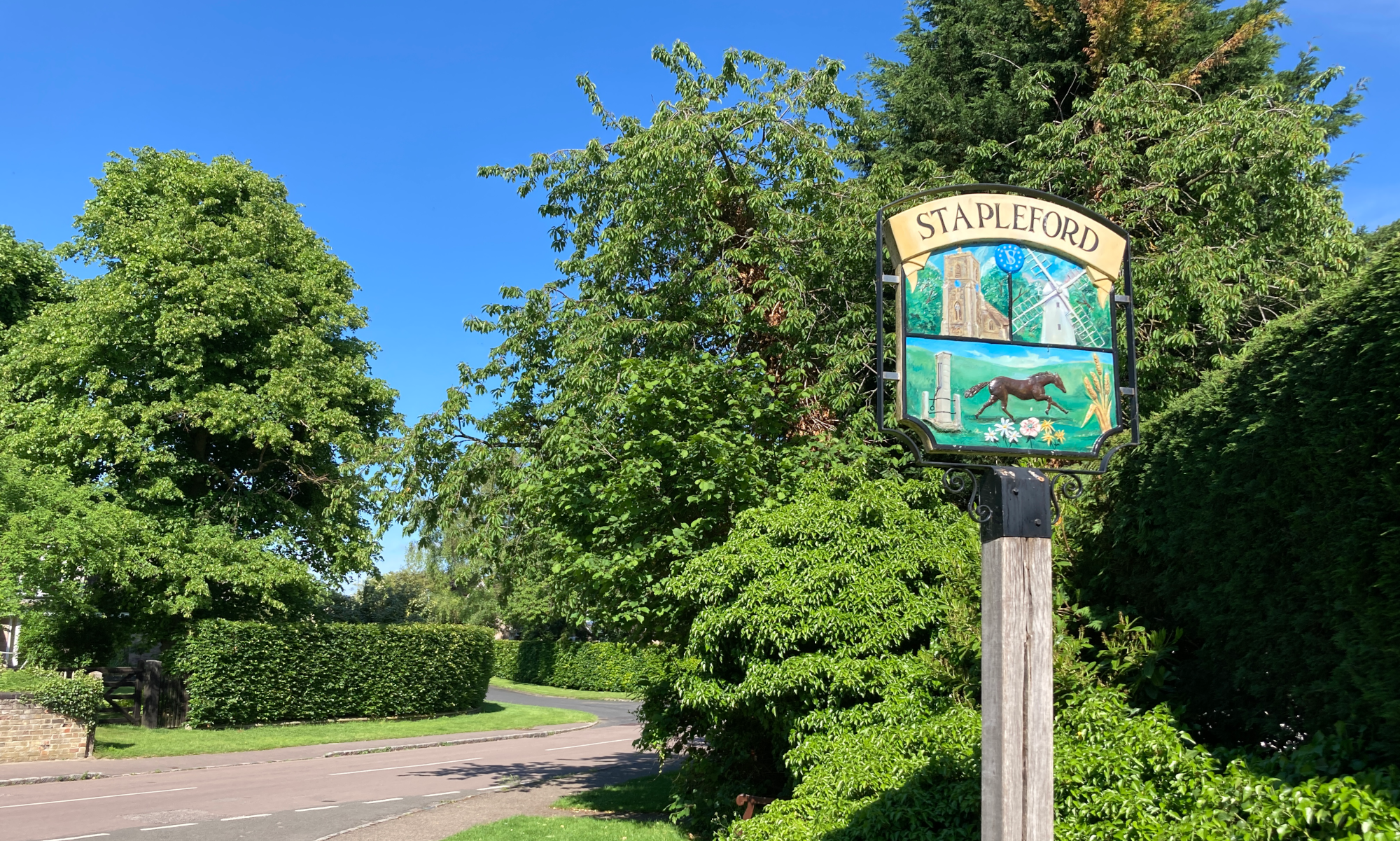Stapleford History Society 9th December 2021
A talk by David J H Jones
Royal Royston! David Jones, accountant turned local historian since his purchase of a pretty thatched cottage in Little Shelford, revealed the secret history of Royston and its connection with the Scottish King James VI who succeeded to the English throne on the death of Queen Elizabeth I in 1603.
After taking the throne, King James spent more nights in his palace at Royston than in any other place and returned to his native Scotland only once. Before boundary changes in 1890, Royston was, in fact, part in Cambridgeshire and part in Hertfordshire, with the site of the now largely unrecognisable palace actually in Cambridgeshire.
During his ‘Accession Progress’ from Edinburgh to London, James was impressed by the relative prosperity of England and was given many valuable gifts. At this point he stayed for only one night in Royston but noticed that the area was good for hunting, particularly hares, and was near Newmarket, Cambridge, and two houses that he would come to know well: Theobald’s and Hinchinbrook.
James began the creation of his palace by renting two old inns, ‘The Greyhound’ and ‘The Cock’ together with Priory Mansion. The building work continued for many years and the street names in the area around Kneesworth Street reflect this. There are many blue plaques to be seen also.
The king’s partiality for his Royston accommodation had a significant effect on the local population. Forty courtiers plus many hangers-on needed to be provided for and a fourteen-mile exclusion zone to preserve the countryside for hunting was implemented. Hedges had to be torn down, ploughing was restricted and the general impact was quite brutal. At one point some locals even kidnapped the king’s favourite dog, Jowler, returning him a day later with a message requesting the king’s return to London because the locals were stressed regarding food supplies and living spaces.
King James was an educated man and enjoyed the company of others like himself. The third Earl of Southampton; Sir Oliver Cromwell, uncle of the Puritan Lord Protector of the same name; Lord Mounteagle all lived nearby and there is the possibility that James’s acting company, The King’s Men, played for him having already acted in Saffron Walden.
The palace at Royston was the scene of many significant events. In 1605 Lord Mounteagle received the letter warning of the Gunpowder Plot while staying there. In 1612 the king negotiated the marriage of his daughter, Princess Elizabeth, to the Elector Palatine. In 1618 he signed the death warrant of Sir Walter Raleigh and in 1623 agreed to the marriage of Prince Charles to Henrietta Maria.
As a Scotsman, James had already played golf and his friend, the Earl of Buckingham, became the first Englishman to play that noble game on Royston Links.
This secret history of Royston was very well-researched, immaculately presented and was a revelation to everyone present in the Pavilion.
[report by Jane Steadman]

